Dacia Duster review – a budget family SUV favourite
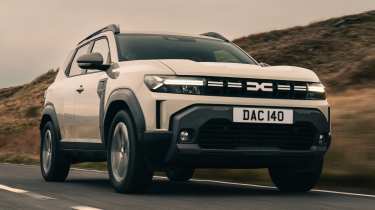
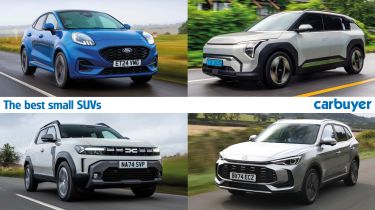
Small SUVs are very much ‘in’ these days. Since taking off in popularity a few years ago, they’ve become the default choice for buyers wanting something compact. Just take a look at the UK’s best-selling cars and you’ll see what we mean. Sorry, superminis and hatchbacks – you’re out.
Manufacturers have been quick to meet the demand for small SUVs and there are now loads to choose from, with petrol, hybrid and fully-electric models in the mix. If you’re not sure where to start, this list will help narrow down your choices. We’ve included our favourite models across a range of price points, with both combustion and battery-powered options.
The term ‘SUV’, or ‘Sports Utility Vehicle’, doesn’t quite hold the same meaning as it used to. Take these small SUVs for example; under the chunky exterior, most are really just superminis with some extra ride height. While some are available with four-wheel drive, don’t expect Land Rover Defender capabilities if you venture off-road.
Our top tips for buying a new car will come into play if you’re shopping for a small SUV. It’s important to weigh up your priorities – is it practicality, fuel economy or comfort perhaps? Most of the models on this list sit at the affordable end of the new car spectrum, but you may be able to save some cash by opting for a smaller supermini if you’re not fussed about sitting up high. Conversely, spending a bit more cash could get you into a mid-size SUV, which will usually bring more boot and passenger space.
Read on for our list of the best small SUVs. For a more general guide to SUVs, we’ve covered the top 10 best SUVs across all classes and sizes. We also have a list of the best used SUVs if you’re shopping for your next family car on a budget.
Readers of Carbuyer will often hear us singing the Dacia Duster’s praises. We reckon it’s the best small SUV on the market today, delivering impressive practicality, respectable fuel economy, and unbeatable value for money. That’s a recipe that we like the sound of, so it’s no surprise that it won our Carbuyer Car of the Year award for 2025.
Key to the Duster’s appeal is its low starting price. Base models start from well under £20,000, which is practically unheard of in this day and age. Even so, we think it’s worth stepping up to at least the Expression trim level. The price jumps by a couple of thousand pounds, but you get far more kit, including a digital driver’s display and a large 10.1-inch infotainment touchscreen with Apple CarPlay and Android Auto. Boot space is another strong point, while most adults should fit in the rear seats without an issue.
With the third-generation Duster came a hybrid engine for the first time. We averaged over 55mpg in this model during our testing, and there were few complaints about the driving experience. There’s even a four-wheel drive model, giving the Duster some genuine off-road abilities, which is a rarity in this class.
| Pros | Cons |
|
|
The Kia EV3 takes everything we like about the brand’s flagship EV9 SUV and packages it into a much more manageable, small SUV body. On paper, that should make it one of the best small electric SUVs around, and after our test, we think that’s a fair statement. You get Kia’s latest interior tech, a refined driving experience, and a longer range than even the top-spec EV9.
Speaking of, the EV3 will manage up to 372 miles of range when fitted with the bigger 81kWh battery. It wasn’t long ago that a figure like that was exclusive to the most expensive EVs on sale, but this EV3 costs from just £36,000. You can shave £3,000 off the bill by opting for the smaller 58kWh battery, but your range will drop to 267 miles. Still, that will be plenty for those who largely stick to urban driving. Both models get a 201bhp electric motor, which is nippy enough, but the EV3 leans more towards comfort than driving enjoyment.
For most buyers, that will be a good thing. On long journeys, we found there was little road or wind noise in the EV3, and the soft suspension deals well with all manner of bumps. The cabin is a real highlight, with a well-judged blend of physical controls and digital screens. It’s even pretty spacious, feeling as roomy inside as the bigger Sportage.
| Pros | Cons |
|
|
The Skoda Kamiq is the firm's third entry into the already packed SUV arena, and it could be its best yet. Featuring Skoda’s familiar design on a smaller scale, the Kamiq is a thoroughly modern, rugged-looking SUV. Beneath the sharp looks, it sits on the same platform as the Volkswagen Polo, Skoda Fabia and Skoda Scala hatchbacks, but it offers an extra level of practicality compared to those superminis.
Inside the Kamiq features a solidly constructed interior with simple-to-use controls and plenty of soft-touch materials. It also has a 400-litre boot and smart features like an ice scraper stored in the fuel filler cap. Two petrol engines are available, with a turbocharged 1.0-litre in either 94 or 113bhp power outputs, while a more powerful 148bhp 1.5-litre petrol engine uses cylinder-on-demand technology, helping to save fuel.
Even as standard, the Kamiq is well equipped with a touchscreen, DAB radio, LED headlights, air con and three sets of ISOFIX points.
| Pros | Cons |
|
|
The latest model of the Renault Captur represents an upgrade from the previous one in almost every area. It’s slightly bigger, so space in the rear seats and in the boot is better than before, and the rear seats can slide fore and aft so you can prioritise room for feet or luggage. Between 422 and 536 litres of boot space is available.
The interior is now much plusher and tech-filled, with a hi-res 10.4-inch portrait touchscreen on top-spec cars and optional elsewhere. Adaptive cruise control and lane-departure warning are standard, though. Buyers have a choice between a conventional 1.0-litre petrol model or an E-Tech hybrid, the latter delivering impressive fuel economy figures of up to 60mpg. If you’re shopping on the used market, Renault previously offered the Captur with plug-in hybrid and diesel engines, which may appeal to those looking for maximum fuel efficiency.
| Pros | Cons |
|
|
The Hyundai Kona won our award for Best Small Family car in the 2024 Carbuyer Awards, and it still holds up a year later. It’s a massive improvement over the old model, with the South Korean brand listening to feedback by increasing practicality. The latest Kona comes as either a petrol, hybrid or fully electric model, making it appeal to a wide range of buyers.
Our favourite version of the Kona is the electric model, thanks to its low running costs and smooth motor, but if you can’t spring for that version, the 1.0-litre petrol model is still a great buy. It feels peppier than its on-paper numbers might suggest, and it’s the sweet spot in the petrol lineup. It even feels well-refined at motorway speeds and the standard six-speed manual feels slick to use – we think it’s even better than the automatic transmission in the 1.6-litre version.
What’s most apparent about the latest Kona is the improved interior over the last model. It feels airy, pleasant and well put-together, with lots of physical buttons rather than virtual ones hidden away in the car’s infotainment system. The 10.25-inch touchscreen infotainment system itself is great to use, and even entry-level Advance cars come with useful kit like front and rear parking sensors and a reversing camera.
| Pros | Cons |
|
|
Under the skin, the Kia Niro is essentially the same car as the Hyundai Kona above, so it’s no surprise it’s also a former Carbuyer Car of the Year award winner. With a design that’s much more striking than its understated predecessor, the Niro is still available with self-charging hybrid, plug-in hybrid and fully-electric powertrains. While the Niro EV has been made somewhat redundant by the newer Kia EV3, the hybrid models are still well worth considering.
The Kia’s boxy shape means even adults can sit in the rear comfortably, plus the 451-litre boot should be sufficient for most family trips or pushchairs. If you can afford it, we recommend stepping up to the top-spec ‘4’ trim as this gets the same curved, dual-screen infotainment setup as the larger Kia Sportage. Regardless of what model you choose, standard equipment is strong, with LED headlights, dual-zone climate control, adaptive cruise control, and a reversing camera fitted to all cars.
| Pros | Cons |
|
|
In 2019, the Ford Puma returned as a small SUV, with a style-led design like the original coupe but now with more space for families. Like the revered coupe, the Puma also boasts class-leading handling, so if you want your crossover to be a fun steer this is the one to choose. It’s certainly proved a hit with buyers, regularly topping sales charts as the best-selling car in the UK.
Its sharp chassis is complemented by a 1.0-litre three-cylinder turbo petrol with either 124 or 153bhp and, as well as peppy performance, both also offer impressive fuel economy of around 50mpg. This is partly thanks to clever mild-hybrid technology that stores energy as you drive to give the engine a helping hand in traffic and when accelerating.
Ford hasn't ignored the interior, either, giving the Puma a sizeable 401-litre boot that's bigger than you'll find in the Ford Focus. Not only this, but a washable 80-litre storage box under the boot floor adds to its everyday practicality. Families can also be confident in the Puma's safety thanks to a five-star Euro NCAP rating, with a 94% score for adult occupant protection.
| Pros | Cons |
|
|
The old MG ZS proved a hit with UK buyers, but we always felt that it fell a bit flat. It was spacious, came with decent interior tech, and it was cheap, but it didn’t have the refinement to match the best small SUVs on sale. The all-new model is a huge improvement over its predecessor. It’s just as spacious, but it's far better to drive than before, all while undercutting many of its rivals on price.
Yes, the MG ZS costs from just £22,000. This is no stripped-back bargain model either; you get loads of standard equipment in the base model, and the general quality feels much higher than you’d expect. Oh, and did we mention it’s a full hybrid? That’s right, for £22,000, you can have a full, self-charging hybrid SUV. Not even the Renault Captur or Dacia Duster can match that.
On the move, the hybrid system feels plenty quick enough. Its 197bhp is more than you get in its rivals, while we saw between 45 and 50mpg during our testing. Our Driver Power owner’s survey has highlighted a few reliability wobbles for the MG brand, but at least you get a seven-year, 80,000-mile warranty as standard.
| Pros | Cons |
|
|
Despite being based on the same underpinnings as electric cars from sister brands such as the Vauxhall Mokka and Peugeot E-2008, the Jeep Avenger stands out thanks to its competitive price, added off-road capability and generous tech offering. Although originally offered just as an EV, Jeep later decided to introduce hybrid and petrol versions, lowering the Avenger’s starting price even further.
We were really impressed with the original electric version, though – it feels great to drive, with enough power for most drivers, and felt comfortable and smooth to ride in as a passenger, too. Cheap running costs certainly add to the appeal, and the Avenger has a reasonable range of up to 248 miles to a charge, making it very usable for most drivers. In our time with the car in cold, wintry conditions, we achieved a respectable range of around 220 miles. We found the Avenger to be surprisingly roomy inside despite its small size, being capable of seating up to four adults in comfort, which can’t be said of some other rivals.
| Pros | Cons |
|
|
As one of the smallest of the small SUVs on this list, the Toyota Yaris Cross will appeal to buyers who want supermini proportions but with an elevated view of the road. It’s essentially a Yaris hatchback in SUV costume – you get similar interior tech and the same 1.5-litre hybrid engine, with impressive fuel economy and Toyota’s rock-solid reputation for reliability. The hybrid system and E-CVT gearbox feel well-suited to urban driving, with the electric motor taking over from the petrol engine entirely at low speeds.
However, its small size does impact practicality. There’s plenty of space for the driver and front passenger, but rear seat room feels slightly cramped when compared to the Renault Captur or Skoda Kamiq. The boot is a reasonable size at 397 litres, but the Ford Puma can easily carry more cargo with its 456-litre boot. That being said, the Yaris Cross will be plenty big enough for some families, and its small dimensions make it easier to park and drive in town.
| Pros | Cons |
|
|
You can compare the prices of each of the small SUVs above in the following table. We’ve also included a column for their Carbuyer score, which is decided by our expert road testers.
| Best small SUV ranking | Make and model | Priced from | Carbuyer rating (out of 5) |
| 1 | Dacia Duster | £19,000 | 4.2 |
| 2 | Kia EV3 | £33,000 | 4.5 |
| 3 | Skoda Kamiq | £24,000 | 4.3 |
| 4 | Renault Captur | £21,000 | 4.3 |
| 5 | Hyundai Kona | £30,000 | 4.3 |
| 6 | Kia Niro | £30,000 | 4.3 |
| 7 | Ford Puma | £26,000 | 4.2 |
| 8 | MG ZS | £22,000 | 4.1 |
| 9 | Jeep Avenger | £24,000 | 4.1 |
| 10 | Toyota Yaris Cross | £26,000 | 4.1 |
Now why not read our list of the best hybrid SUVs?
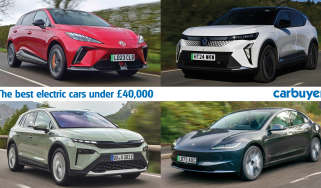
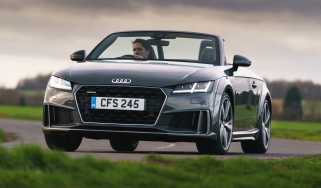
The Audi TT might not be dead after all as bosses weigh up EV comeback
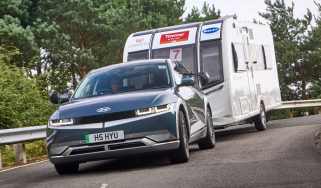
Towing with an electric car or hybrid – can I tow a caravan?
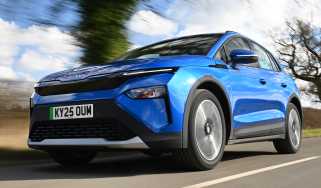
Skoda Elroq review – a great-value compact electric SUV


